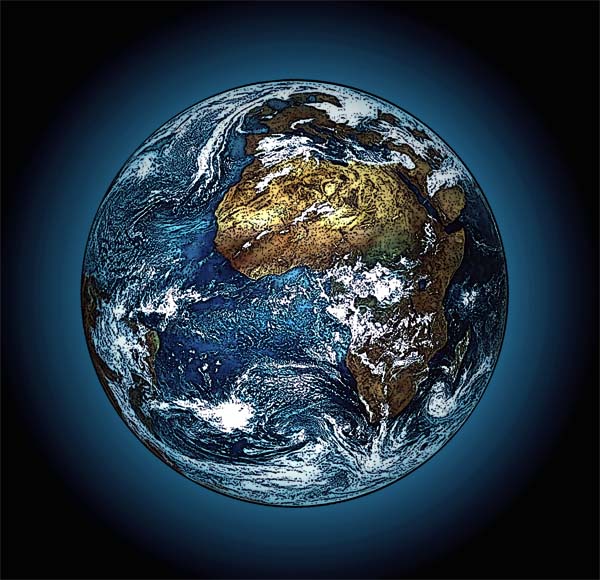Please note: The Academy will close at 3 pm on Thursday, April 18, for Big Bang Gala.
Science News
Geoengineering
February 26, 2010

Geoengineering Experts Disagree in San Diego
That was the headline James Fleming of Colby College wanted the press to use for a very heated press conference at the AAAS Meeting last Saturday.
The press conference brought together a diverse mix of scientists and researchers, including a science historian, a philosopher and an ethicist. And, as Dr. Fleming remarked, they certainly did not agree.
As the moderator of the conference said in his opening and indisputable statement, geoengineering is the altering of the Earth. At the meeting, three symposia addressed geoengineering as a response to another human activity—our altering the planet through global warming. The press conference combined aspects of the three different sessions.
Geoengineering can include carbon capture and sequestration, but the hot button issue at the conference and the one that many cannot agree on, including the experts Dr. Fleming referred to above, is the issue of solar radiation management. Much of the discussion centers on injecting sulfur into the stratosphere—also referred to as increasing stratospheric aerosols. This sounds pretty scary, but as Ken Caldeira mentioned, no climate intervention will be perfect, and it could be a bad thing compared to a worse situation, likening it to chemotherapy treatment for cancer. If you can save lives and reduce suffering, it may have to be a solution.
It has to be mentioned that this isn’t for the present climate crisis, but the future, as the climate is likely, under any IPCC scenario, to get worse. As Braden Allenby said, climate change is not a problem that can be fixed as long as we have seven billion people on the planet; it’s going to be a problem for a very long time. He went on to add that geoengineering, still very much in its infancy and currently only in the modeling and discussion levels, is a possible “response to the challenge ahead... a part of a portfolio of options.â€
Philip Rasch of Pacific Northwest National Laboratory is researching how sea salts could be used to brighten clouds, another solar radiation management possibility. This solution would be more regionalized and less global than the sulfate aerosols.
On Monday morning, a Royal Society study was to address the pros and cons of each of these.
Our own paleo-ecologist, Peter Roopnarine has these comments about geoengineering:
Personally, I am very skeptical of geoengineering for two reasons. First, although the caveat is usually presented that this is an option for the future, it is nevertheless viewed as mitigation in many quarters. This is particularly true of carbon sequestration. Our efforts right now should be placed on reducing greenhouse gas emissions. Failure to do so will ultimately doom the current geoengineering proposals because they will be outstripped by the problem. Second, too many of the approaches are too simplistic. This is true of the other class of options, those of environmental manipulation. Here I include options such as solar shielding, cloud manipulation and ocean iron seeding. We have insufficient understanding of these processes on large spatial and temporal scales to predict all of the possible impacts. The systems are complicated and complex, and the models aren't up to the job. Caldeira's chemotherapy analogy is an interesting one; you literally kill a good deal of the body to solve one problem. But we're talking about an entire planet here, and as complicated as the human body is, planet Earth is orders of magnitude more complicated.
Creative Commons image by Heikenwaelder Hugo